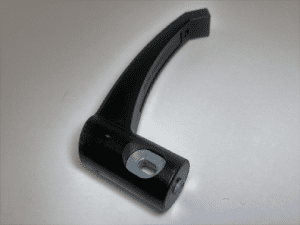
What is Insert Molding?
Insert molding is a process where pre-fabricated components or inserts, such as metal parts, electronic circuits, or even other plastic parts, are encapsulated within a plastic mold during the injection molding process. The molten plastic material surrounds and bonds with the insert, creating a unified and integrated part. This approach enables the combination of various materials, enhances structural integrity, and simplifies the assembly process.
The Advantages of Insert Molding for Medical Devices:
- Improved Design Flexibility: Insert molding allows medical device designers to integrate multiple components into a single unit, facilitating more complex and functional designs. This versatility not only enhances product performance but also enables the creation of smaller, lighter, and more ergonomic devices.
- Enhanced Precision: By incorporating inserts directly into the mold, insert molding ensures precise placement and alignment of components, resulting in consistent and accurate assembly. This level of precision is crucial for medical devices that require high levels of reliability and performance, such as implantable devices and surgical instruments.
- Increased Strength and Durability: The fusion between the insert and the plastic material creates a robust bond, significantly increasing the strength and durability of the final product. This is particularly advantageous for medical devices that are subjected to rigorous use, sterilization processes, and exposure to harsh chemicals.
- Streamlined Assembly Process: Insert molding eliminates the need for separate assembly steps, as multiple components can be integrated into a single injection molding cycle. This simplifies the manufacturing process, reduces labor costs, and minimizes the risk of assembly errors or component misalignment.
- Cost Savings: By consolidating multiple components into a single molded part, insert molding reduces material waste, assembly costs, and the need for additional fasteners or adhesives. Furthermore, the improved production efficiency and cycle time optimization associated with plastic injection molding lead to overall cost reductions.
Applications of Insert Molding in Medical Devices:
The applications of insert molding in the medical device industry are vast and diverse, spanning across various fields:
- Surgical Instruments: Insert molding enables the integration of metal or plastic inserts into surgical instruments, enhancing their functionality, ergonomics, and ease of use. Examples include forceps, retractors, scissors, and clamps with embedded sensors or electronic components.
- Implantable Devices: Insert molding is widely utilized in the production of implantable medical devices, such as pacemakers, orthopedic implants, and drug delivery systems. The technique enables the encapsulation of delicate electronics, connectors, and sensor components within biocompatible materials, ensuring optimal performance and patient safety.
- Diagnostic Equipment: Insert molding allows for the integration of complex components in diagnostic devices, such as electrodes, sensors, connectors, and fluidic channels. This simplifies the manufacturing process, reduces the risk of component detachment, and ensures reliable test results.
Summary
Insert molding through plastic injection molding has revolutionized the medical device manufacturing industry, offering enhanced design flexibility, improved precision, increased strength, and streamlined assembly processes. The technique enables the creation of sophisticated medical devices that deliver superior performance, durability, and cost-effectiveness. As technology continues to advance, insert molding is poised to play an even more significant role in shaping the future of medical device production, driving innovation, and improving patient outcomes.